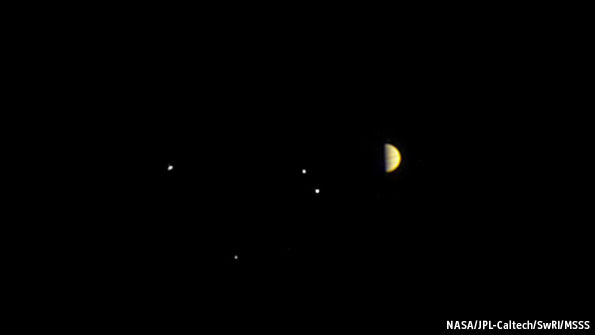By Jove!

IN 1543 Nicolaus Copernicus proposed, in a mathematically rigorous way, that the Earth is not the centre of the universe, and thus that all things do not revolve around it. In fact, only the Moon does so. Seven decades later Galileo Galilei provided more direct proof of Earth’s lack of specialness. He looked at Jupiter through a primitive telescope and found that the planet had four moons of its own.
Four centuries after Galileo’s discovery, it remains impossible to understand the solar system without understanding Jupiter. The sun accounts for 99.8% of the solar system’s mass. But Jupiter, which is more than twice as massive as the other seven planets put together, makes up most of the rest. Its heft shapes the orbits of the other planets, the structure of the asteroid belt and the periods of many comets. And the four moons observed by Galileo (seen to the left-hand side of Jupiter in the picture above) have proved merely the biggest members of an entire solar system in miniature: at the moment Jupiter has 67 known satellites.
The picture was taken on June 21st by Juno, a probe belonging to NASA, America’s…Continue reading
Source: Economist




